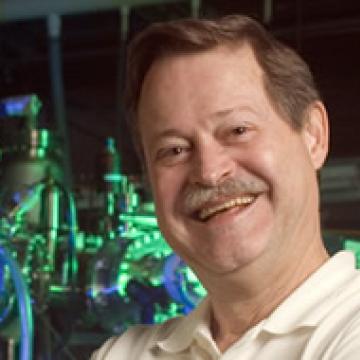"In a blink of geological time," says Philip Froelich, Eppes Professor of Oceanography, "humans have changed the ecology of the planet."
Related Links
| • | Department of Oceanography |
| • | National High Magnetic Field Laboratory |
Looked at in clock time, it's been a slow burn…literally. To fuel many of our modern endeavors, we've been burning fossil fuels—oil, coal, and natural gas—and releasing carbon dioxide, a greenhouse gas, into the atmosphere.
"But we've already added so much carbon dioxide to the atmosphere that for several hundred or even thousands of years we're going to affect the climate of the planet in ways that are only poorly understood," Froelich says.
"If we continue adding carbon dioxide at the rate we are now, ultimately the icecaps are going to melt and raise sea level," Froelich explains. "Nobody was in Tallahassee the last time the sea level rose to such heights about 15 million years ago. Back then the shore was just south of town. Such a scenario is almost already inevitable."
The likely result of our "contribution" to the planet's surface and atmosphere is the focus of Froelich's research. To best predict how the surface of the earth will process and respond to the stress we're placing on it, we first must understand how this massive engineering plant—the earth—has processed carbon and other elements in the past.
"We can make some educated guesses about the future global climate warmth by looking at the distant geological past," Froelich says.
To get the right samples, Froelich has gone to the ends of the earth.
He participated in the Joint Global Ocean Flux Study (JGOFS), funded by the National Science Foundation, to set particle traps in the waters surrounding Antarctica and then, a year later, recover them and take deep ocean sediment cores. Froelich and a few dozen fellow researchers sailed aboard the icebreaker Nathaniel B. Palmer and headed for the Antarctic Polar Front, home to some of the planet's roughest seas. Hampered by extreme-cold-weather clothing, Froelich and his colleagues worked on deck to hoist the traps and cores onboard.
Froelich was looking, in particular, for sediment records on the ocean's floor to interpret what the planetary eco-system looked like about 15 million years ago.
"That's the most recent period of real warmth, when there were no icecaps and when the sea level was 300-400 feet higher than it is today."
Once he had samples in hand, Froelich began using his expertise in chemistry, geology, and oceanography to provide data that, ultimately, other researchers will use to begin working on solutions.
"Perhaps 200 years in the future," Froelich explains, "if we grow to a population of 9 or 9.5 billion, this will be an urban planet. By then we will have supplanted most of the natural processes on Earth, and, if the species is going to survive, we'll have to figure out how to keep this planet ticking. That's somewhat harsh, but it's the likely reality."
Froelich contributes much more to potential future solutions than just data. He's also shaping the minds that will continue his scientific mission.
"I've got the best of both worlds," he says. "I'll soon have a lab here at the National High Magnetic Field Laboratory in which to do my work, and I teach in the university's oceanography and geology departments, where I can train the next generation."
He also has to instill a good measure of moral courage in his students. "When you're out there stumbling around in the dark trying to figure out how the surface of the planet works, you make a lot of mistakes and hit some dead-ends," he explains. "You have to take risks—ask questions that someone said you shouldn't."
For Froelich, the risks include going to the ends of the earth—to help prevent the end of the earth.
